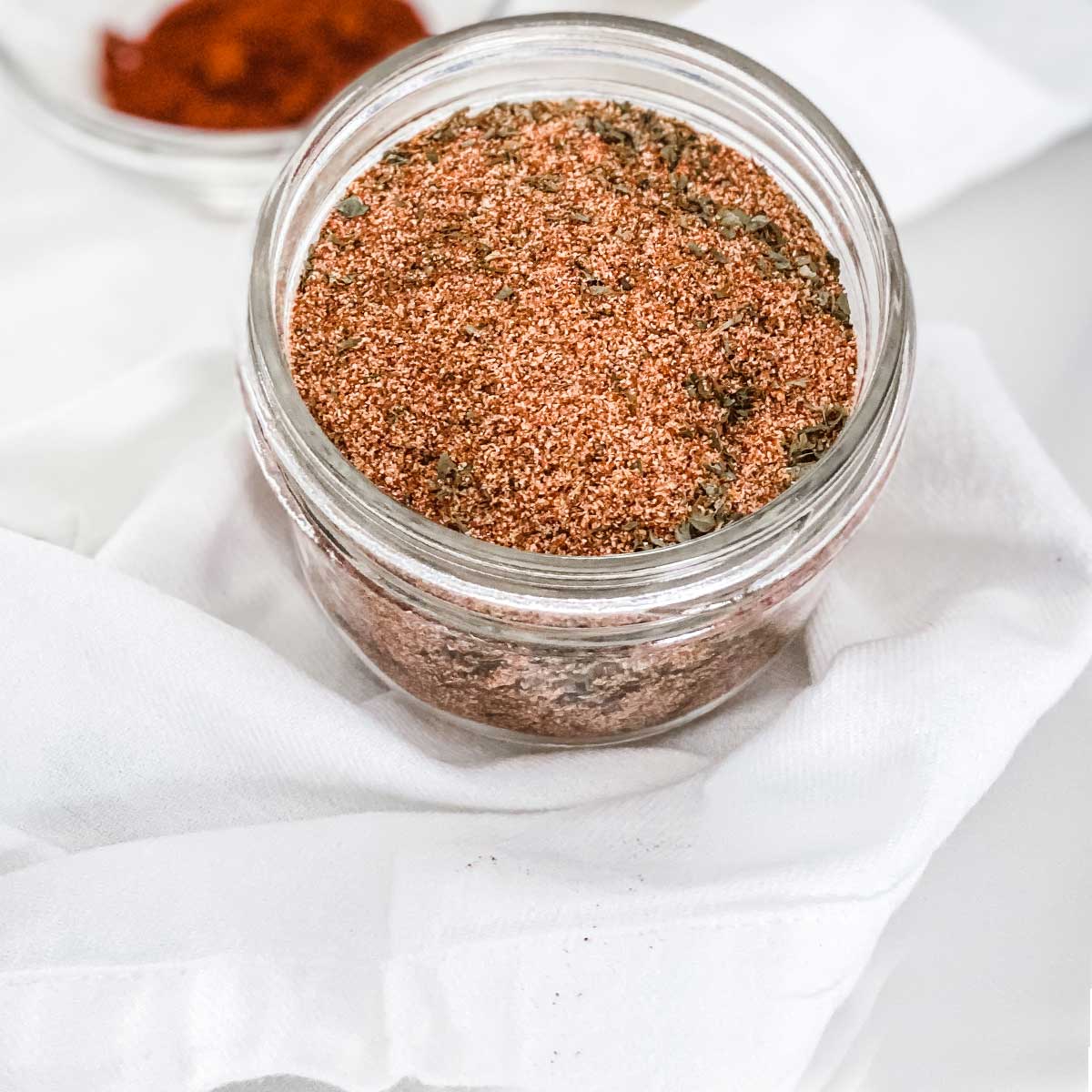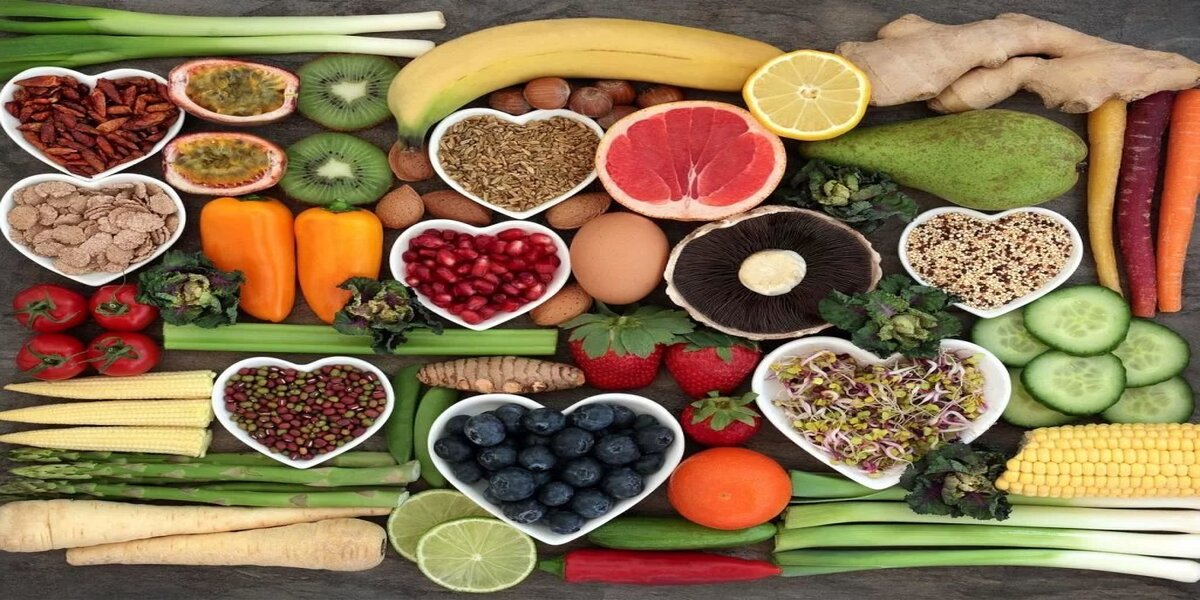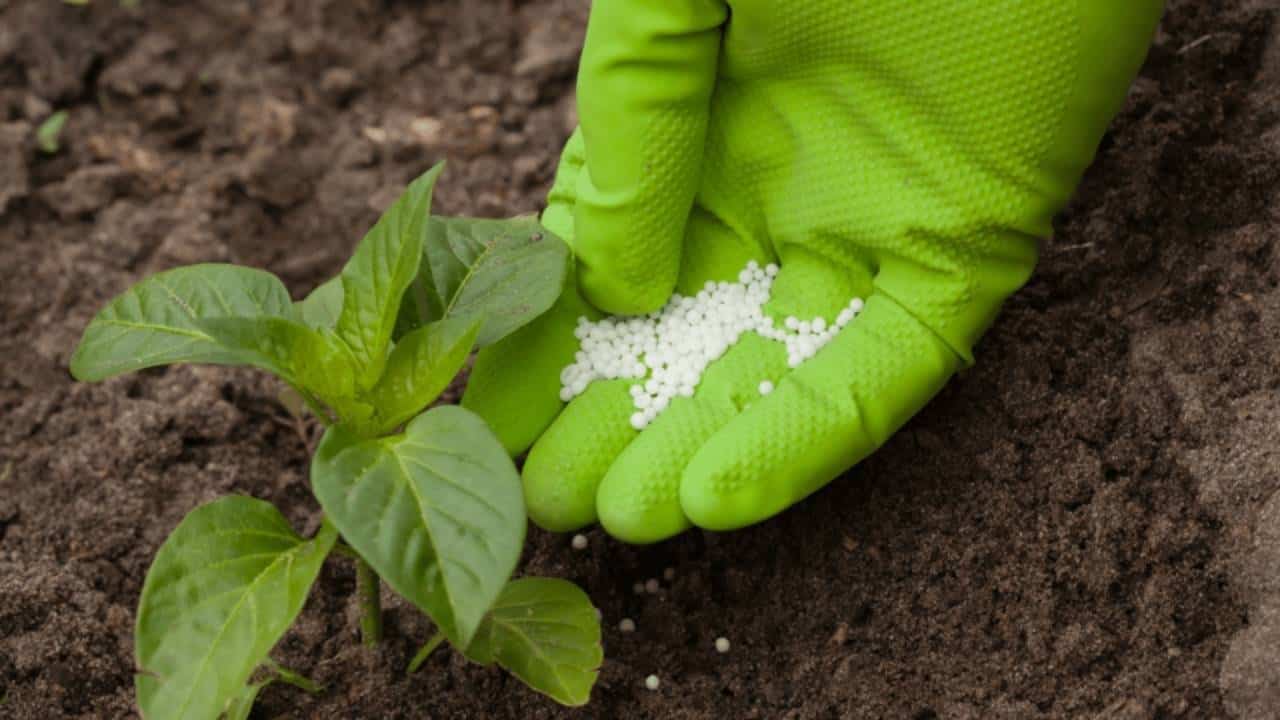Home>Gardening Tips and Tricks>Eco-Friendly Gardening>What Is Good Compost


Eco-Friendly Gardening
What Is Good Compost
Modified: January 22, 2024
Learn how to create eco-friendly compost for your garden with our guide on what makes good compost. Improve your gardening practices and help the environment.
(Many of the links in this article redirect to a specific reviewed product. Your purchase of these products through affiliate links helps to generate commission for Chicagolandgardening.com, at no extra cost. Learn more)
Table of Contents
Introduction
Welcome to the world of eco-friendly gardening!
Gardening is not just about growing beautiful plants and flowers – it is also an opportunity to make a positive impact on the environment. One way to achieve this is through eco-friendly gardening practices, such as composting.
Composting is the process of converting organic materials, such as food scraps and yard waste, into nutrient-rich compost. This compost can then be used as a natural fertilizer and soil amendment in your garden, eliminating the need for chemical-based products that harm the environment.
In this article, we will explore the world of composting and how you can create your own eco-friendly compost heap. We will discuss the benefits of composting, the elements of good compost, and the methods to create and maintain a healthy compost pile. By the end, you will have the knowledge and tools to incorporate eco-friendly gardening practices into your own backyard.
So, whether you are a seasoned gardener looking to improve your composting skills, or a beginner wanting to make a positive impact on the environment, let’s dive into the world of eco-friendly gardening and discover the wonders of composting!
What is Compost?
Compost is often referred to as “black gold” in the gardening world, and for good reason. It is a nutrient-rich soil amendment that is created through the natural process of decomposition. Composting is nature’s way of recycling organic materials, such as leaves, grass clippings, kitchen scraps, and even coffee grounds, back into the earth.
When organic materials go through the composting process, they break down into a dark, crumbly substance that is teeming with beneficial microorganisms. These microorganisms, including bacteria, fungi, and worms, play a vital role in decomposing the organic matter and transforming it into nutrient-rich humus.
Compost is not only great for enriching the soil, but it also enhances its structure and promotes better drainage and water retention. It acts as a natural fertilizer, providing essential nutrients, such as nitrogen, phosphorus, and potassium, for plants to thrive.
In addition to its nutritional benefits, compost also helps to improve soil health. It encourages the growth of beneficial soil organisms, improves soil aeration, and enhances its ability to retain moisture. By adding compost to your garden, you are creating a sustainable and balanced ecosystem that supports plant growth and reduces the need for synthetic fertilizers and harmful chemicals.
Composting is a simple and cost-effective way to reduce organic waste and minimize your environmental footprint. Instead of throwing away kitchen scraps and yard waste, you can recycle them and turn them into a valuable resource for your garden.
Now that we understand what compost is and how it is created, let’s explore the numerous benefits of composting in the next section.
Benefits of Composting
Composting offers a multitude of benefits for both your garden and the environment. Let’s take a closer look at some of the key advantages of incorporating composting into your eco-friendly gardening practices:
- Reduces waste: Composting allows you to divert organic waste from landfills, where it would otherwise contribute to methane emissions. According to the U.S. Environmental Protection Agency, organic waste constitutes about 30% of the total waste generated in the country. By composting, you can significantly reduce this waste and contribute to a more sustainable future.
- Natural fertilizer: Compost is a natural, nutrient-rich fertilizer that provides essential elements for plant growth. It improves soil fertility, enhances root development, and aids in the overall health and vigor of your plants. Unlike synthetic fertilizers, compost releases nutrients slowly and promotes long-term soil health.
- Improves soil structure: Incorporating compost into your soil improves its structure, making it more crumbly and easier to work with. It enhances soil aeration and drainage, preventing waterlogging and reducing the risk of root rot. Additionally, compost helps sandy soils retain moisture and clay soils improve their drainage capabilities.
- Suppresses diseases and pests: Compost contains beneficial microorganisms that help suppress harmful pathogens and pests in the soil. These microorganisms compete with and inhibit the growth of disease-causing organisms, creating a healthier environment for your plants to thrive.
- Reduces the need for synthetic chemicals: By enriching your soil with compost, you can reduce the reliance on synthetic fertilizers and pesticides. Compost provides a balanced blend of nutrients and promotes a diverse microbial community, which naturally helps prevent nutrient deficiencies and pest infestations.
- Conserves water: Compost improves soil water retention and reduces water runoff. It acts as a sponge, absorbing excess water and releasing it slowly to plant roots. By enhancing soil moisture levels, compost helps conserve water and reduces the need for frequent irrigation.
- Encourages biodiversity: Composting promotes the growth of beneficial soil organisms, such as earthworms, beetles, and beneficial fungi. These organisms contribute to healthy soil ecosystems and aid in the breakdown of organic matter, further enriching the compost.
As you can see, the benefits of composting extend far beyond simply improving your garden. Composting is a sustainable practice that helps protect the environment, conserve resources, and create healthier, more resilient plants.
Elements of Good Compost
Creating good compost requires a balance of various elements that contribute to the overall quality and nutrient content of the final product. Here are the key elements to consider when aiming for high-quality compost:
- Brown materials: Also known as carbon-rich materials, these include dry leaves, straw, shredded newspaper, and woody prunings. Brown materials provide a source of carbon, which is essential for the decomposition process and helps balance the nitrogen content in the compost pile.
- Green materials: These are nitrogen-rich materials, such as grass clippings, kitchen scraps, coffee grounds, and fresh plant trimmings. Green materials provide the necessary nitrogen that fuels the activity of decomposer organisms and speeds up the decomposition process.
- Air circulation: Adequate air circulation is crucial for composting to prevent the pile from becoming compacted and developing unpleasant odors. Turning the compost regularly or using a compost bin with aeration vents helps ensure that oxygen reaches the microorganisms responsible for decomposition.
- Moisture: Like all living organisms, the microorganisms in the compost pile require water to thrive and carry out their decomposition process. It is important to maintain consistent moisture levels in the compost pile, similar to that of a wrung-out sponge. Too much water can lead to a smelly, anaerobic environment, while insufficient moisture can slow down the decomposition process.
- Particle size: The size of the organic materials in the compost pile affects the decomposition process. Smaller-sized materials break down faster, so shredding or chopping larger materials, such as branches or vegetable scraps, can expedite the composting process.
- Microorganisms: Beneficial bacteria, fungi, insects, and worms are essential for the decomposition of organic matter. These microorganisms break down the materials and convert them into nutrient-rich humus. Adding a shovel full of garden soil or finished compost to the pile can introduce the necessary microorganisms or consider using compost starter, which contains the beneficial microorganisms required for decomposition.
By ensuring the right balance of brown and green materials, providing adequate air circulation and moisture, and incorporating the necessary microorganisms, you can create a thriving compost pile. This will result in nutrient-rich compost that will greatly enhance the fertility and health of your garden soil.
Creating the Ideal Compost Heap
Now that you understand the elements of good compost, it’s time to create your ideal compost heap. Follow these steps to set up your composting system:
- Choose a location: Select a suitable spot for your compost heap. It should be easily accessible, preferably on level ground, and have good drainage. Consider placing it in a partially shady area to prevent excessive drying out or overheating of the compost pile.
- Build the base: Start by creating a layer of coarse materials, such as twigs or small branches, at the bottom of the compost pile. This promotes airflow and helps prevent the pile from becoming too compacted.
- Add organic materials: Layer brown and green materials in equal proportions, ensuring that each layer is no more than 6 inches thick. Alternate between moist and dry materials to maintain the right moisture balance in the pile. Shredding or chopping larger materials will speed up decomposition.
- Maintain moisture: Monitor the moisture levels in the compost pile regularly. It should feel damp, like a wrung-out sponge. If the pile is too dry, water it lightly. If it is too wet, add dry brown materials to absorb the excess moisture.
- Turn the pile: Regularly turning the compost pile facilitates aeration, mixes the materials, and accelerates the decomposition process. Use a pitchfork or garden tool to carefully turn the materials from the outside of the pile to the center. Aim to turn the pile every couple of weeks.
- Monitor temperature: As the organic materials decompose, the compost pile will generate heat. Monitor the temperature with a compost thermometer, aiming for a range of 130 to 160 degrees Fahrenheit (54 to 71 degrees Celsius). This temperature range helps kill weed seeds and pathogens, resulting in a safe and nutrient-rich compost.
- Patience and time: Composting is a natural process that takes time. Depending on various factors such as ingredients, size of the pile, and turning frequency, it can take anywhere from a few months to a year for the compost to fully mature. Be patient and allow nature to work its magic.
By following these steps and maintaining regular care and attention, you can create the ideal compost heap. Remember, composting is a continuous process, so you can keep adding organic materials as they become available to sustain the composting cycle.
Now that you have built and set up your compost heap, let’s explore how to turn and maintain it in the next section.
Turning and Maintaining the Compost Heap
Turning and maintaining your compost heap is crucial for creating high-quality compost and accelerating the decomposition process. Follow these tips to effectively turn and maintain your compost pile:
- Regular turning: Turning the compost pile every two to three weeks helps aerate the materials and promotes even decomposition. Use a garden fork or compost turning tool to carefully lift and mix the materials. This allows oxygen to reach the microorganisms and helps prevent the pile from becoming compacted.
- Balancing brown and green materials: As you turn the compost, pay attention to the balance of brown and green materials. Adjust the ratio if necessary, adding more greens if the pile is too dry and sluggish, or more browns if it is too wet and smelly. A balanced ratio ensures optimal decomposition and prevents any potential issues.
- Moisture management: Maintain the moisture levels in the compost pile by watering it periodically during dry spells or covering it with a tarp during heavy rainfall. The compost pile should always feel damp, like a wrung-out sponge. Avoid overwatering, as excessive moisture can lead to anaerobic conditions and unpleasant odors.
- Add appropriate materials: Continuously add appropriate organic materials to the compost pile to keep it active and productive. Kitchen scraps, yard waste, and shredded paper are excellent additions. Avoid adding meat, dairy products, or oily materials, as they can attract pests and slow down the decomposition process.
- Avoid invasive species: Be cautious of adding plants or weeds that may be invasive to your compost. Some weeds, seeds, or diseased plant materials may survive the composting process and could potentially cause problems in your garden when you use the finished compost.
- Use cover materials: Covering the compost pile with a layer of straw, shredded leaves, or compost cover material helps insulate it, retain moisture, and prevent odors. This cover layer also assists in maintaining optimal temperature and preventing flies or pests from gaining access.
- Monitor and adjust: Regularly monitor the compost pile for any issues such as foul odors, excessive heat, or slow decomposition. Adjust the composting process accordingly by managing the carbon-to-nitrogen ratio, moisture levels, and turning frequency. Making mindful adjustments ensures you maintain a healthy and active compost pile.
Remember, composting is a dynamic process that requires ongoing care and attention. By regularly turning and maintaining your compost heap, you are actively contributing to the decomposition process and creating nutrient-rich compost for your garden.
Now that you have mastered the art of turning and maintaining your compost heap, let’s move on to the next step: testing and using the finished compost.
Testing and Using Finished Compost
Testing and using the finished compost is an exciting step in the composting journey. It allows you to see the fruits of your labor and reap the benefits of your eco-friendly gardening efforts. Here’s how you can test and utilize your finished compost:
1. Visual inspection: Start by visually inspecting your compost. The finished product should have a dark, crumbly texture and earthy smell. It should be free from recognizable pieces of organic material and mostly uniform in appearance.
2. Sift and sieve: If desired, you can sift or sieve the compost to remove any larger chunks or unfinished materials. This can result in a finer, more uniform texture that is easier to spread and incorporate into your garden beds.
3. Conduct the squeeze test: Perform the squeeze test by grabbing a handful of compost and squeezing it gently in your palm. If the compost is adequately decomposed and mature, it should hold its shape initially and then crumble apart easily when disturbed.
4. Perform a pH test: Use a pH testing kit to check the pH level of your compost. Ideally, it should be near neutral (around 6-7 pH), which is suitable for most plants. If the pH levels are too high or low, you can adjust them by adding materials such as limestone or sulfur, respectively.
5. Apply compost to your garden: Utilize the finished compost as a natural fertilizer and soil amendment in your garden. Spread a layer of compost around your plants, shrubs, or trees to enrich the soil and provide nutrients. Mix it into your vegetable beds or top-dress your lawn for improved fertility.
6. Mulching: Take advantage of your compost as a mulch by applying a thin layer around plant bases and on top of garden beds. Mulching helps conserve moisture, suppress weeds, regulate soil temperature, and further enrich the soil as it breaks down.
7. Compost tea: Brew compost tea by steeping a bag of compost in water for a few days. Use this nutrient-rich liquid to water your plants or as a foliar spray for a boost of organic nutrients.
8. Store excess compost: If you have more compost than you can immediately use, store it in a cool, dry place for future gardening projects. Use a covered container or bin to keep it protected from moisture and pests.
Remember, the use of compost is incredibly versatile and beneficial for a variety of garden plants. It improves soil structure, enhances plant growth, suppresses diseases, and reduces the need for synthetic fertilizers.
By testing and utilizing your finished compost, you are closing the loop on the composting process and embracing a sustainable approach to gardening.
Conclusion
Congratulations on embarking on your journey towards eco-friendly gardening through composting! By now, you have learned what compost is, the benefits it offers, the elements of good compost, how to create the ideal compost heap, and how to turn, maintain, and test the finished compost.
Composting is a powerful and sustainable practice that not only helps reduce organic waste but also enriches the soil and promotes healthy plant growth. As you incorporate composting into your gardening routine, you are contributing to a more sustainable and environmentally friendly approach to cultivation.
Remember to maintain a proper balance of green and brown materials, provide adequate moisture and air circulation, and turn your compost regularly. Patience is key, as the decomposition process takes time, but the end result is worth it – nutrient-rich compost that nourishes your plants and improves your garden’s overall health.
Utilize your finished compost as a natural fertilizer, soil amendment, mulch, or compost tea. By doing so, you reduce your reliance on synthetic chemicals and create a harmonious ecosystem that supports beneficial soil organisms and reduces waste.
As you continue your eco-friendly gardening journey, explore other sustainable practices such as water conservation, companion planting, and using native plants. By incorporating these practices, you can further enhance the health and resilience of your garden while minimizing your environmental impact.
So, go forth with your newfound knowledge and passion for eco-friendly gardening. Embrace the wonders of composting, and let your garden thrive in harmony with the earth. Happy gardening!









